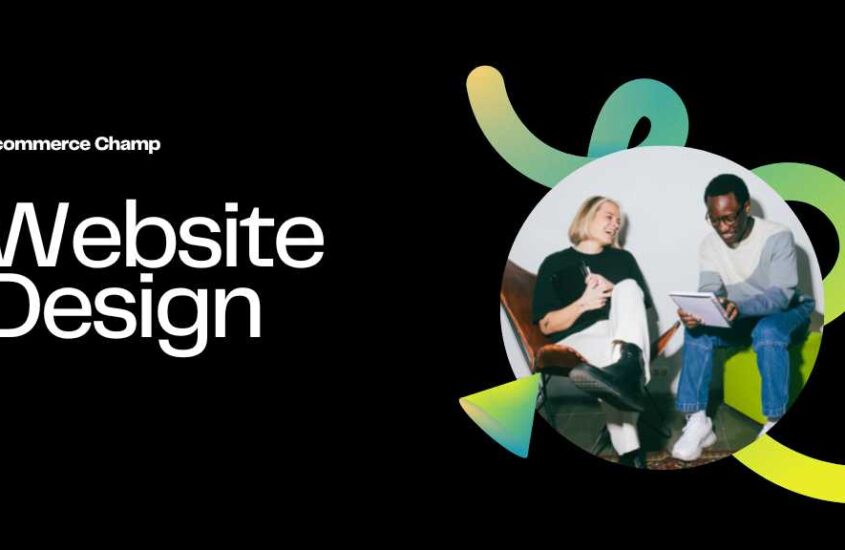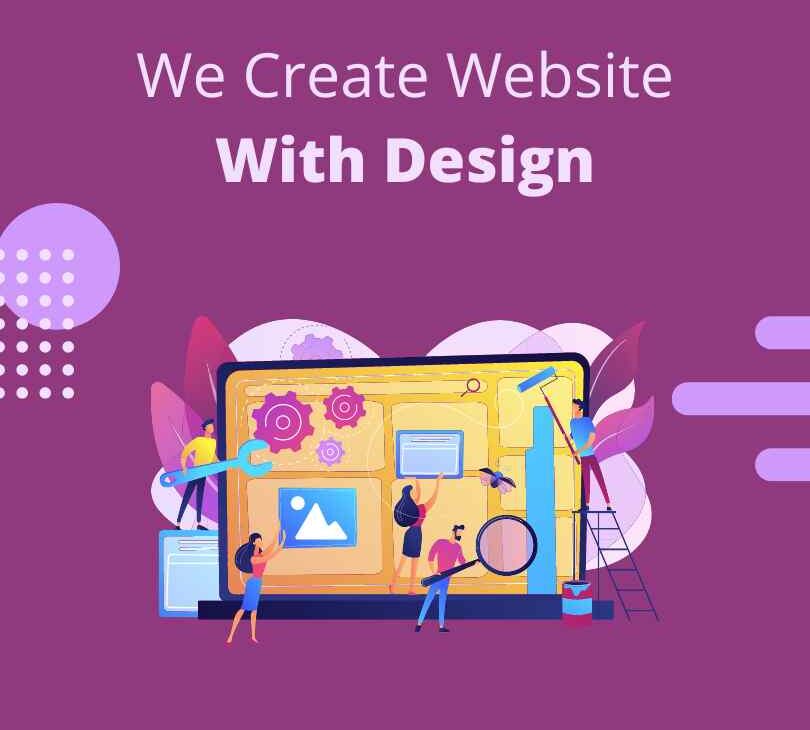Website Design: A Creative and Expressive Guide

In today’s digital age, a website is often the first point of contact between a business or organization and its customers. A well-designed website can attract and retain visitors, convey important information, and ultimately drive conversions and sales. However, creating a website that is both beautiful and functional can be a daunting task, especially for those who are new to website design.
That’s why we’ve created this comprehensive guide to website design, which will provide you with the tools and knowledge you need to create a website that is not only visually appealing but also user-friendly and effective. In this guide, we’ll cover topics such as color schemes, typography, negative space, responsive design, storytelling, accessibility, visual elements, and user experience. By the end of this guide, you’ll be equipped with the skills to create a website that not only looks great but also delivers results. So, whether you’re a business owner, marketer, or designer, let’s dive in and explore the world of website design together.
How to Choose the Right Color Scheme for Your Website
The color scheme of your website is one of the most important elements to consider when designing a website. Color has a powerful impact on the way people perceive and interact with your website. And it can influence their emotions and behaviors in subtle but significant ways. Choosing the right color scheme for your website can help you create a visually appealing and memorable site that resonates with your audience, builds trust, and communicates your brand message effectively.
When it comes to choosing a color scheme for your website, there are several factors to consider. First and foremost, you’ll want to think about your brand identity and the message you want to convey. Your color scheme should reflect your brand’s personality, values, and mission. And it should be consistent with your other marketing materials such as your logo, business cards, and social media profiles.
You’ll also want to think about the practical considerations of color. Your color scheme should be legible and easy on the eyes. With sufficient contrast between text and background to ensure readability. You should also consider the accessibility needs of your audience. And choose colors that are easy for people with visual impairments to see and distinguish.
The Role of Typography in Website Design
Typography is an essential element of website design. It refers to the art and technique of arranging type to make written language legible, readable, and appealing when displayed. The typography on your website plays a critical role in communicating your brand message, establishing hierarchy and structure. And creating a visually appealing and memorable experience for your visitors.
When it comes to choosing typography for your website, there are several factors to consider. First and foremost, you’ll want to choose a font that is legible and easy to read. Your font should be large enough to be easily read on any device and should be contrasted well against the background color of your website.

Hierarchy and structure are also important considerations when it comes to typography. Your website’s typography should be arranged in a way that clearly communicates the hierarchy of information. With headlines and subheadings clearly differentiated from body text. The use of bold, italic, and underlined text can help to create visual interest and establish a clear hierarchy.
Finally, you’ll want to consider the aesthetics of your typography. Your font choice and typography should be visually appealing and harmonious with the overall design of your website. The color of your font should also be carefully chosen to ensure it contrasts well with your background color. Making it easy to read and engaging.
Why Negative Space is Important in Website Design
Negative space, also known as white space, is the empty or blank space between design elements in a website. While it may seem counterintuitive to include empty space in your design. Negative space plays a critical role in website design and can greatly enhance the user experience.
One of the main reasons negative space is important in website design is that it helps to improve the readability and legibility of your content. When you give your content room to breathe, it becomes easier for users to read and process. Negative space can also be used to create a clear hierarchy of information on your website. With important content and calls to action given more space and attention.
Negative space can also be used creatively to create visual interest and engage users. By strategically placing empty space around images, text, or other design elements. You can create a sense of contrast and tension that draws the user’s eye and creates a more dynamic and engaging experience. Just as a best circular saw must be carefully calibrated and maintained in order to function properly and produce accurate cuts. A website must be designed with care and attention to detail in order to deliver an effective user experience and achieve its intended goals.
The Importance of Responsive Website Design
Responsive website design is a crucial component of modern web development. With an increasing number of people accessing websites from mobile devices. It’s essential that websites are designe to be responsive and adapt to different screen sizes and devices.
There are several key reasons why responsive website design is important. First and foremost, it provides a better user experience for visitors to your website. When your website is responsive, it will automatically adjust to the size and orientation of the user’s screen. Ensuring that the content is always legible and easy to navigate. This means that users are more likely to stay on your website for longer and engage with your content.
Another benefit of responsive website design is that it can improve your website’s search engine rankings. Google and other search engines prioritize mobile-friendly websites in their search results. Meaning that a responsive website is more likely to appear at the top of search engine results pages. This can help to drive more traffic to your website and increase your visibility online.
Responsive website design can also save time and money. Rather than creating multiple versions of your website for different devices. A responsive website can adapt to any screen size, eliminating the need for additional development work. This means that you can save time and money on web development and maintenance. While still providing a high-quality user experience for all visitors to your website.
The Role of Accessibility in Website Design
Accessibility is an often-overlooked aspect of website design, but it’s one that’s becoming increasingly important in today’s digital landscape. The goal of accessibility in website design is to ensure that all users. Regardless of their abilities, can access and use a website effectively.
There are several key reasons why accessibility is important in website design. First and foremost, it’s a legal requirement in many countries. In the United States, for example, the Americans with Disabilities Act (ADA) requires that websites be accessible to people with disabilities. Failure to comply with these regulations can result in legal action and significant financial penalties.
But beyond legal requirements, accessibility is important because it ensures that all users can access your website and engage with your content. This includes people with disabilities such as visual impairments. Hearing impairments, and mobility impairments, as well as those with cognitive or learning disabilities. By designing your website with accessibility in mind, you can ensure that all users have a positive experience and can access the information and services they need.
Conclusion
In conclusion, website design is a critical component of any digital strategy. And there are many elements that must be consider in order to create a successful and effective website. From choosing the right color scheme and typography to designing for accessibility and responsive design. Every aspect of website design plays a crucial role in shaping the user experience and achieving your goals.
By understanding the importance of these different elements and how they work together, you can create a website that not only looks great but also functions effectively and meets the needs of your target audience. Whether you’re designing a website for a small business or a large corporation, it’s important to invest the time and resources necessary to ensure that your website is well-designed, user-friendly, and accessible to all users.









